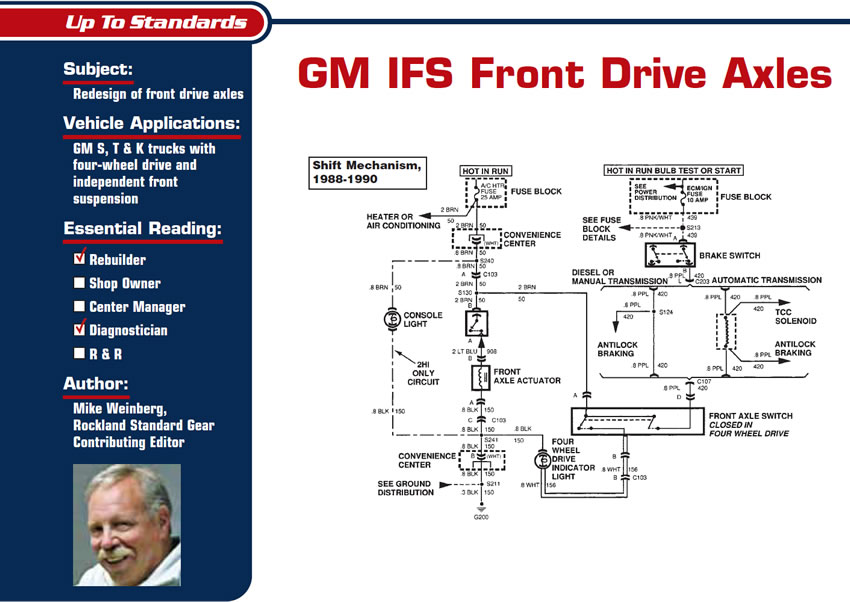Detailing not just for Car Bodies
Vehicle restoration is a time-consuming process. Some projects remain scattered about the garage much longer than planned or appreciated. The definition and effort involved with detailing vary with the type of vehicle. An off-road Bronco probably gets a last set of decals, whereas the vintage collector gets paint and buffing.
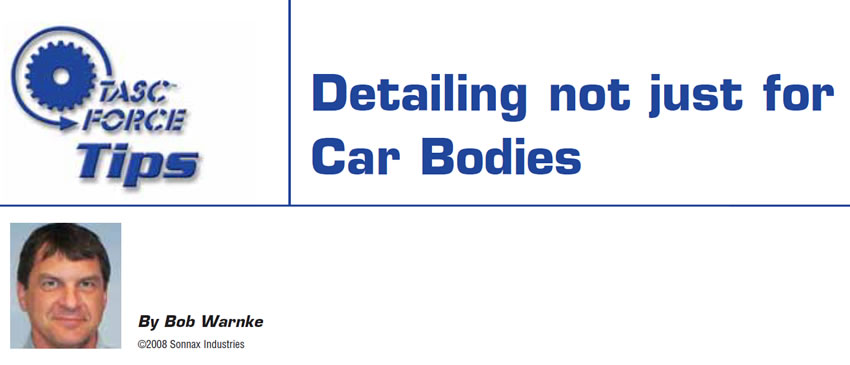
Singing the TCM Blues
We recently did a repair on a family friend’s car (first mistake); it was a simple problem. Her 1995 Chrysler Cirrus with a 41TE transaxle had codes 41 (L/R-solenoid-circuit error), 42 (2/4-solenoid-circuit error) and 21 (OD-pressure-switch circuit). The vehicle had only 81,000 miles, and she did not have very much money (same old story). The solenoid body failed the resistance test, so we replaced it. The solenoid-body connector was not making good contact with the solenoid body (common problem); it was replaced and the wire connections were soldered, not crimped.
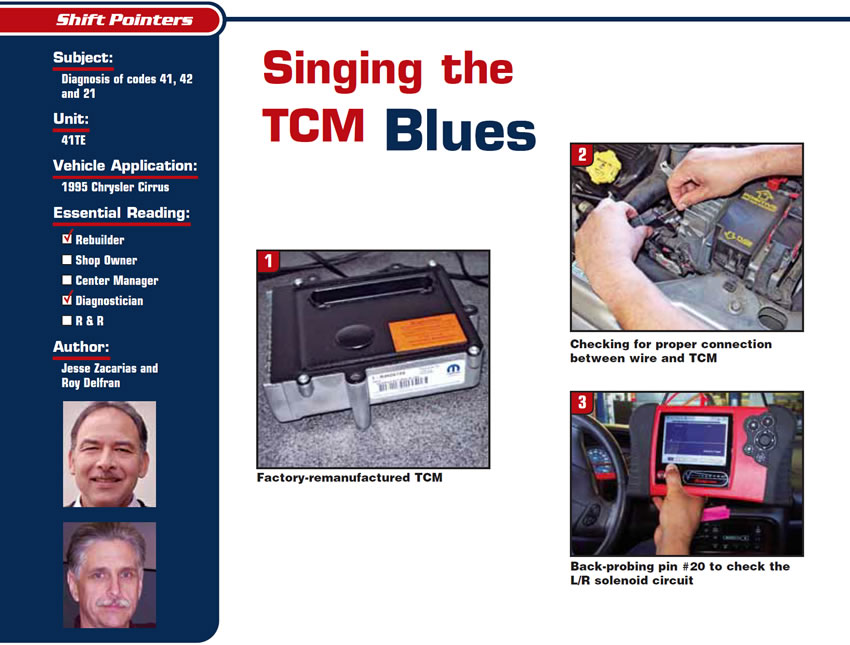
October 2008 Issue
Chrysler PCI
(Programmable Controller Interface)
Module-to-Module Bus Communication, Part 2
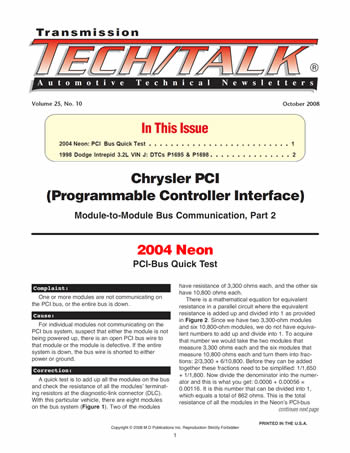
A Self-Inflicted Injury
There have been enough different cross-connection scenarios that ATSG could easily do a full-day seminar on the subject. The worst of all involved an R4A-EL transmission in a Mazda 929 on which the input-speed sensor was cross-connected with the heated O2 sensor. Soon after the vehicle was started, voltage from the ECM that was supposed to be going to the heated O2 sensor was being routed to the TCM because of the cross-connection error.
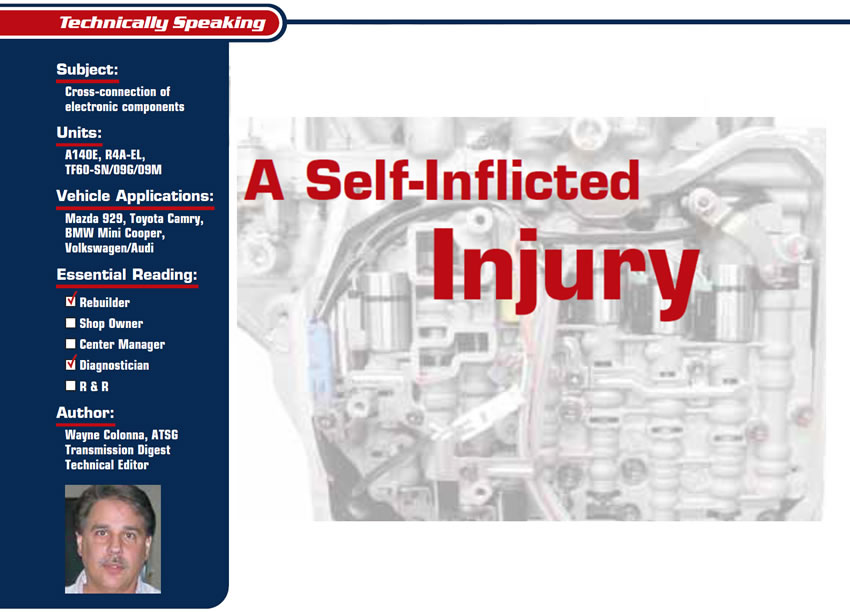
Blame the Torque Converter, Part 2
Last month, in Part I of “Blame the Torque Converter,” a 2001 Volkswagen Jetta and a 2002 Toyota Tundra were both thought to have faulty torque converters. Both vehicles had TCC-related trouble codes (the Jetta had a 740 code and the Tundra had a 770 code).
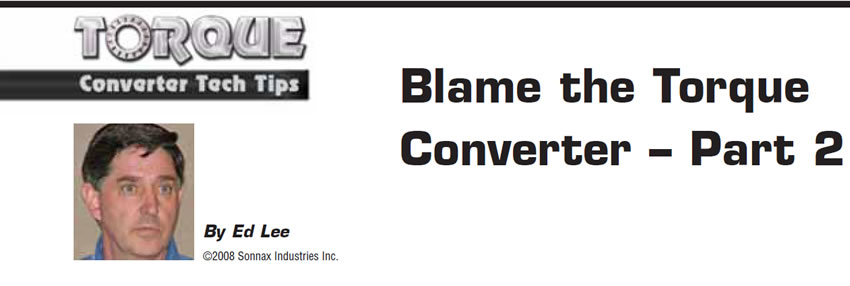
Walt’s ’57 ECM Woes
“Drive by wire,” if you’re not familiar, is a system of throttle control using a set of accelerator-pedal-position (APP) sensors to tell the engine-control module (ECM) what the driver would like to have happen with the throttle. The ECM uses a throttle-actuator control (TAC) module, which opens and closes the throttle plate to the desired angle. The TAC module contains a set of throttle-position sensors that operate linearly opposite each other the same way as the APP sensors. Contained inside the TAC module is also an actuator that is driven by the ECM that moves the throttle plate itself.
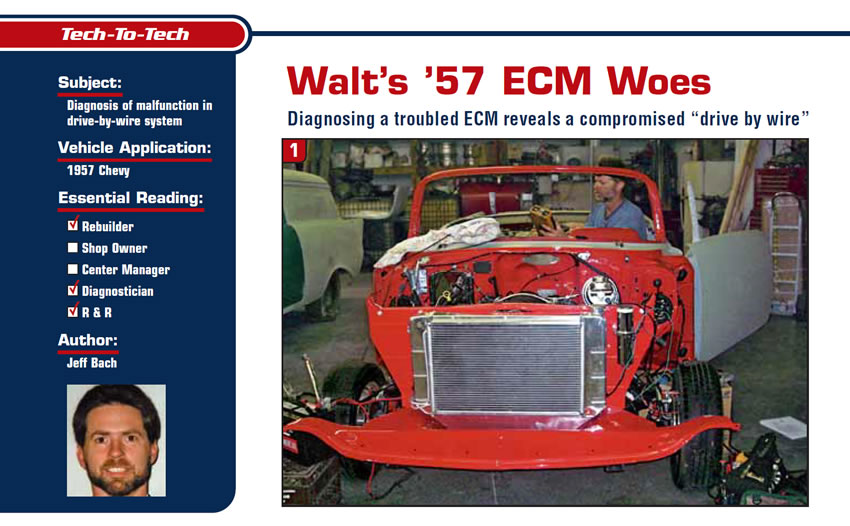
Does Outside Sales Really Work?
I know outside sales works and so do most of you. You’ve all tried it from time to time. I built my transmission business almost exclusively on it by hitting the road myself in the beginning and then always having an outside salesperson on the payroll. As the commercial about the lottery says, “You have to be in it to win it.”

GM IFS Front Drive Axles
In 1983 General Motors redesigned the front drive axles on its four-wheel-drive S and T trucks. The new design was an independent front suspension (IFS) for better handling and ease of manufacturing and repair. In 1988 GM added IFS front drive axles to its full-size-truck lines (K trucks).
